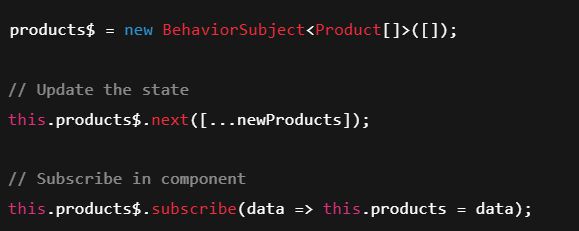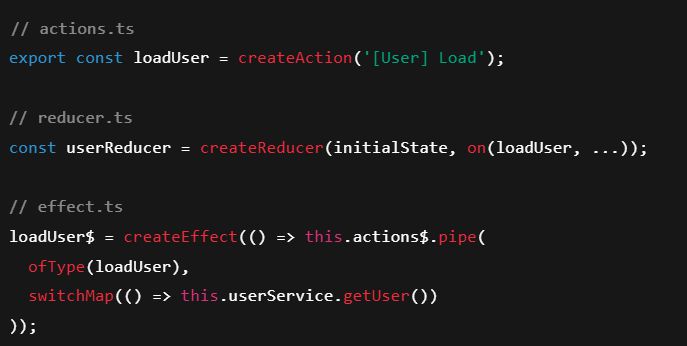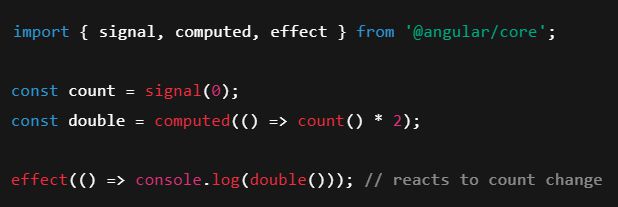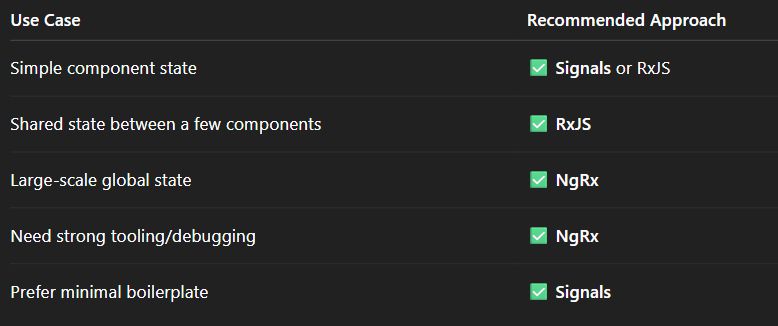Introduction
If you’ve ever built a feature-rich Angular app, you know managing state is like managing chaos—data from APIs, form updates, component communication—it all becomes spaghetti real fast. That’s where reactive state management comes in:
In this post, we’ll break down three key approaches:
-RxJS – the foundation.
-NgRx – the heavy-duty toolkit.
-Signals – the shiny new kid on the block.
What is Reactive State Management?
In Angular, reactive means your UI reacts automatically when data changes.
For example:
-You update a value → UI changes –Data from an API comes in → component updates
1.RxJS: The Core of Reactivity in Angular
RxJS is built into Angular. It’s a library for reactive programming using Observables. You’ve already used it with:

Use case: Local state management

Pros:
-Lightweight and flexible
-Native to Angular
-Perfect for component-level state
Cons:
-No structure or conventions
-State logic can get scattered in large apps
2.NgRx: The Redux-Inspired Powerhouse
NgRx builds on RxJS to offer a structured way to manage global state using:
-Actions
-Reducers
-Selectors
-Effects
Think of it as Redux for Angular.
Use case: Global state management (like user data, cart, auth)

Pros:
-Centralized and predictable
-Scales well for large apps
-Built-in tooling (Dev Tools, effects, etc.)
Cons:
-Verbose and boilerplate-heavy
-Learning curve is steep for beginners
-Might be overkill for small/medium apps
3. Angular Signals: The Future of Reactivity?
Introduced recently, Signals are Angular’s new reactivity primitive, a simpler way to track and respond to state changes without Observables.
Use case: Component state that updates the UI automatically

Pros:
-Super lightweight and easy to read
-No subscriptions, no unsubscriptions
-Perfect for component or local state
Cons:
-Still experimental (as of 2025, evolving)
-Not meant for large-scale global state (yet)
-Integration with existing RxJS code can be tricky
When to Use What?

Conclusion: Pick What Feels Right for Your App
In the world of Angular, there’s no one-size-fits-all when it comes to state management. It’s kind of like choosing your favourite pizza topping, everyone has their preference, and that’s okay!
-If you love flexibility and control, RxJS gives you the tools to build exactly what you need.
-If you crave structure and predictability, NgRx is your best friend for complex, enterprise-scale apps.
-And if you’re into simplicity with a modern twist, Signals might just steal your heart.
The beauty of Angular in 2025? You don’t have to choose just one. You can mix and match—Signals for quick, reactive UI changes, RxJS for async flows, and NgRx for managing shared app-wide state like a pro.
